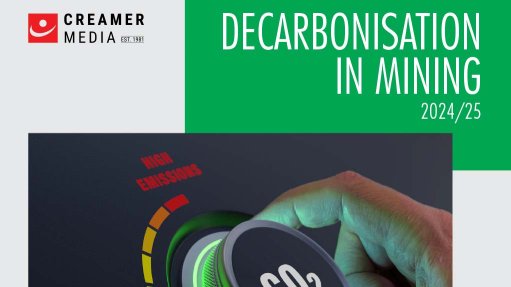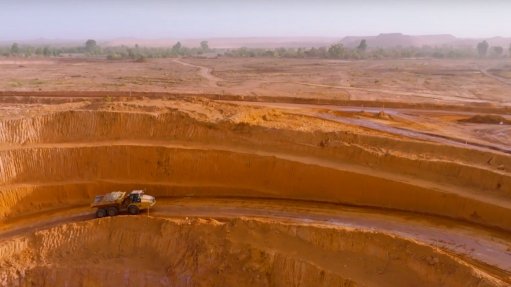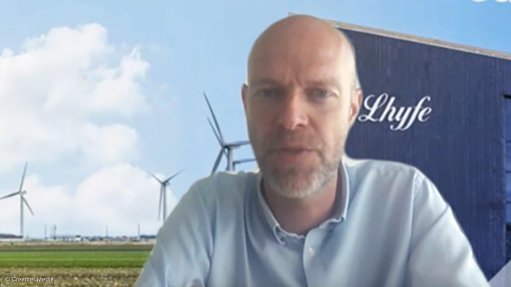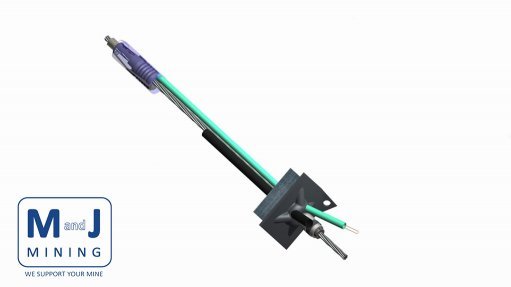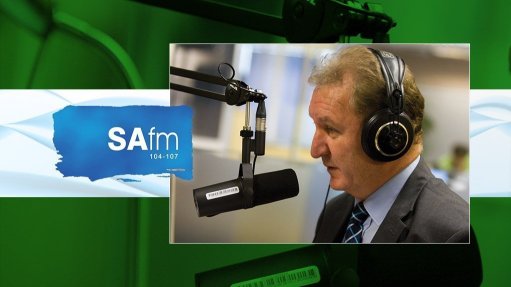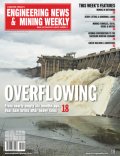Proposed amendments to the Mineral and Petroleum Resources Development Act 28 of 2002
This article has been supplied by the author and has not been written or solicited by Creamer Media. It may be available only for a limited time on this website.
By: Jonathan Veeran, Rita Spalding, Francois Sieberhagen, Bruce Dickinson, Garyn Rapson, Giada Masina, Kate Collier, Partners & Manus Booysen, Consultant at Webber Wentzel
Minister Gwede Mantashe gazetted the Draft Mineral Resources Development Bill, 2025 (Bill) for public comments by 18 August 2025. The Bill has not yet been introduced to parliament. It is likely that a revised draft, incorporating public comments, will be introduced to parliament later and follow the formal process under the relevant portfolio committee.
The Bill proposes several noteworthy amendments to the current regulatory framework for mineral resources. Firstly, all references to petroleum and the regulation of the exploration and production of petroleum products have been deleted. This aligns with the Upstream Resources Development Act 23 of 2024, which, although not yet in force, aims to provide separate regulation of the petroleum industry.
To address illegal mining, the Bill proposes including prohibitions on assisting or providing services to illegal miners and the transportation of any minerals without prescribed documentation. Additionally, existing provisions relating to mining permits will be amended to regulate small-scale mining operations, with the concept of artisanal mining being formally introduced. The Minister would be empowered to identify and designate certain areas and invite applications for black persons, as has now been defined, for small-scale and artisanal mining permits. Regulating these artisanal and small-scale operations enhances the regulator's ability to apply and enforce occupational health and safety standards within artisanal mining operations, with these operations then falling clearly within the scope and ambit of the Mine Health and Safety Act enforced by the Mine Health and Safety Inspectorate.
The Bill introduces the concept of 'associated mineral'. which refers to any mineral found in mineralogical association with another primary mineral, where it is physically impossible to mine one without the other. The proposed revised section 102 allows rights holders to prospect or mine for associated minerals and dispose of them, provided they declare this to the Department of Mineral and Petroleum Resources and subsequently apply to include such minerals in the existing rights. This may solve some of the issues relating to overlapping applications.
A Ministerial Advisory Council will be established to advise the Minister on sustainable resource development, transformation growth, beneficiation terms and conditions and other ministerial referrals. The Bill also provides for the establishment of a Regional Mining Development Environmental committee with detailed responsibilities for adjudicating objections and making recommendations to the Minister, along with specifications regarding committee membership.
The Bill includes a somewhat unhelpful definition of 'controlling interest', requiring ministerial consent in terms of section 11 for a change of control in listed and unlisted companies. This requirement could prove impractical for listed companies as stock market transactions are fluid and subject to their own rules and regulations, potentially leading to compliance conflicts.
The definition of 'effective date' has been amended to align with the Mawetse judgment, making rights effective from when the right is granted rather than when executed. Previously, rights were notarially executed well after being granted, resulting in right holders retaining their rights for longer periods than initially intended and creating uncertainty regarding renewal application deadlines.
To address tailing dumps and associated issues (such as the Jagersfontein disaster), which were created before 1 May 2024, not being governed by the MPRDA, the Bill introduces the concept of 'historic residue stockpiles'. Transitional provisions give owners two years to either include the dump/stockpile in its mine works programme by way of an amendment in terms of section 102 (in circumstances where such material is situated within an existing mining area) or apply for a right insofar as the material is situated outside an existing mining area. Failure to apply for a right will result in the dump/stockpile reverting to the state. To close the regulatory loopholes associated with old mine dumps, similar amendments have been proposed to the National Environmental Management Act (NEMA).
Environmental Impact Assessment Regulations. These changes will also go some way to resolving any confusion regarding the application of the Mine Health and Safety Act to these operations and the role that the Mine Health and Safety Inspectorate has in enforcing worker health and safety in these operations.
Furthermore, the Bill clarifies that environmental authorisation applications for rights and permits must only be applied for once the MPRDA right or permit application has been accepted. This will clear up the current misalignment between the MPRDA and NEMA. Environmental management plans or environmental management programmes approved in terms of the MPRDA before the National Environmental Management Amendment Act, 2014, will be deemed approved with an environmental authorisation under NEMA. This is another significant move to end this debate and regularise any historic NEMA non-compliance prior to one environmental system.
Regarding the processing order for rights, section 9 of the MPRDA provides that the Minister must not accept applications where an existing application or rights exist over an area. However, this contradicts sections 16 and 22 of the MPRDA, which provide that the Minister must accept an application if applied for a different mineral, albeit same land.
The Bill introduces requirements for meaningful community consultation regarding social and labour plans before rights can be granted, expanding beyond the previous requirement to consult with landowners and lawful occupiers. Definitions relevant to consultation have been amended to clarify the consultation requirements, considering recent case law. An amended definition of 'community' refers to groups within local and district municipal areas and a definition of 'landowner' recognises both registered landowners as well as rights in land which are unregistered and in respect of which persons or communities enjoy protection under any law. This makes it clear that holders of informal rights in land, as envisaged in the Interim Protection of Informal Land Rights Act, will be considered landowners and should be meaningfully consulted. When granting mining rights, the Minister must impose housing and living conditions standards for the minerals industry and apply the Broad-Based Black Economic Empowerment Act (B-BBEE) regarding ownership, inclusive procurement, supplier and enterprise development, human resource development, as well as employment equity and mining community development. This creates potential for a mining-specific code to be developed in terms of the B-BBEE Act.
Section 26 amendments aim to promote local beneficiation, requiring mineral producers to make minerals available for local beneficiation. This is vague and provides too much administrative discretion.
Finally, the Bill streamlines the appeals process in terms of section 96, directing all MPRDA-related appeals to the Minister regardless of who made the initial decision, while environmental appeals are expected to be submitted to the Minister of Water and Sanitation and Forestry, Fisheries (which is confusing as these are two separate ministries). Although this amendment seems positive for aggrieved parties, the environmental appeal route creates confusion as it overlaps with existing NEMA provisions for environmental authorisation decisions.
Comments
Press Office
Announcements
What's On
Subscribe to improve your user experience...
Option 1 (equivalent of R125 a month):
Receive a weekly copy of Creamer Media's Engineering News & Mining Weekly magazine
(print copy for those in South Africa and e-magazine for those outside of South Africa)
Receive daily email newsletters
Access to full search results
Access archive of magazine back copies
Access to Projects in Progress
Access to ONE Research Report of your choice in PDF format
Option 2 (equivalent of R375 a month):
All benefits from Option 1
PLUS
Access to Creamer Media's Research Channel Africa for ALL Research Reports, in PDF format, on various industrial and mining sectors
including Electricity; Water; Energy Transition; Hydrogen; Roads, Rail and Ports; Coal; Gold; Platinum; Battery Metals; etc.
Already a subscriber?
Forgotten your password?
Receive weekly copy of Creamer Media's Engineering News & Mining Weekly magazine (print copy for those in South Africa and e-magazine for those outside of South Africa)
➕
Recieve daily email newsletters
➕
Access to full search results
➕
Access archive of magazine back copies
➕
Access to Projects in Progress
➕
Access to ONE Research Report of your choice in PDF format
RESEARCH CHANNEL AFRICA
R4500 (equivalent of R375 a month)
SUBSCRIBEAll benefits from Option 1
➕
Access to Creamer Media's Research Channel Africa for ALL Research Reports on various industrial and mining sectors, in PDF format, including on:
Electricity
➕
Water
➕
Energy Transition
➕
Hydrogen
➕
Roads, Rail and Ports
➕
Coal
➕
Gold
➕
Platinum
➕
Battery Metals
➕
etc.
Receive all benefits from Option 1 or Option 2 delivered to numerous people at your company
➕
Multiple User names and Passwords for simultaneous log-ins
➕
Intranet integration access to all in your organisation






















